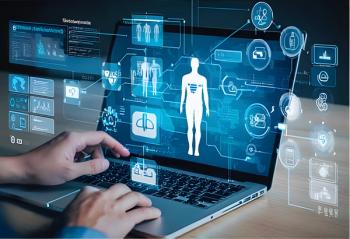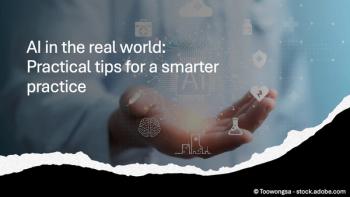
EHRs in the Future When All of Medicine is Understood
Until the day when medicine if fully understood, today's EHRs will struggle to make sense out of data that is ambiguous and imprecise.
Perhaps someday, in the far distant future, we will have identified and understood every molecule, every atom, and every base-pair in everyone's DNA. Every chemical process, every electrical phenomenon, and perhaps others yet to be discovered will be understood down to their smallest inner workings. We will understand how the brain "thinks," how memories are stored, and how reasoning is performed. We may eventually answer one of the great philosophical questions of all time: When observers are presented with the same physical object or phenomenon, are the representations that form in their respective minds (brains) the same or different?
On that day, it will be straightforward to capture, in a historical record, anything about an individual that might be of interest. Straightforward because each individual bit of information will be exactly that - something describable as a precise series of bits. With total knowledge, ambiguity is banished. Measurements and other information will be precise, not approximate. Recording the data will be sufficient. It will not be necessary to describe the thought processes that we used to reach a tentative diagnosis because we will know the actual diagnosis precisely.
In that future, the technology that is used to build today's EHRs will be "just what the doctor ordered" because that is the kind of data for which it was designed - precise and unambiguous data.
Until that day, everything will remain ambiguous, unknown, approximate, or imprecise to some degree and before today's EHRs can use it as data it must be coerced into a form that simulates precision and clarity. That includes information that we personally comprehend but find difficult to communicate intact to others.
The necessity of describing complex, wide-ranging thoughts in a few words introduces additional ambiguity and imprecision. In order to turn such thoughts into "data" of a kind that today's EHRs can understand, it is necessary to apply additional thought processes. This requires a conscious decision about in what way the information will be "phoneyed up" or "dumbed down" so that the computer will find it digestible.
In order to produce ICD, SNOMED, and other codes, information must be put through the sausage grinder twice. First to discard all that pesky ambiguity, then to force what is left into sausage casings (the coding scheme), none of which are quite the right size or shape for what we are trying to cram into them. Coding is a type of what computer scientists call "hashing" - producing a digest of the data from which the original cannot be recovered.
So, in the future, when ambiguity and imprecision have been reduced to the point that information won't need to be mangled or otherwise abused by hashing it, we will no longer have the need for either narrative or codes. Data will be just data, not a hash of data. Until then, when information is "data-ized" or hashed (coded), the opportunity to ever know what was discarded in the process is lost along with its meaning.
Until that time, narrative is king. It is the only form of information that is capable of representing everything that could possibly be expressed about a patient or an event to the best of the ability of the one creating the record. The author can choose the words that he/she believes will best convey the details of the story. Text (narrative) is the only form that can hold information in its raw state so that subsequent needs for "data" can be fulfilled by going back to the source and reinterpreting it in the context of the desired use.
Using a computer, reuse of narrative text can be facilitated by delimiting, tagging or, in some other manner, annotating those portions of the text that are known in advance to have quantitative implications or to be readily convertible into computer data. Most of today's EHRs have not been designed to do this. Instead they subordinate the need to fully and accurately capture information to the demands made by both the government's and the technology's definitions of data.
Newsletter
Optimize your practice with the Physicians Practice newsletter, offering management pearls, leadership tips, and business strategies tailored for practice administrators and physicians of any specialty.








